Steam Turbine Locomotives
When I was creating the “largest Locomotive” list, I got my first real look at the steam turbine locomotives. There weren’t many of them, and for the most part, they were unsuccessful experiments. But a few had short lives before being replaced by the diesels. Most of them failed because of maintenance issues, but the power of these machines was awesome!
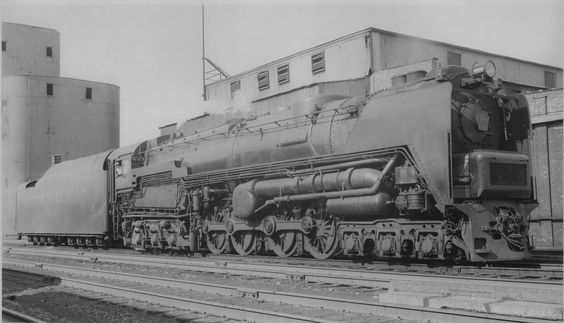
PRR #6200, S2, built by Baldwin in 1944. I accidently left this off the list of “largest” locomotives – mostly because the others were all articulated and this one isn’t. But it has a power rating of 7,200 hp @ 100 mph. The caption reads: “The S2 steam turbine locomotive built for the Pennsylvania Railroad was the only one ever to use this wheel arrangement 6-8-6 and weighing in at almost one million pounds. The engine built in 1944, used a direct-drive steam turbine, which ensured a smooth uniform power flow (torque or tractive effort) at all speeds. As the locomotive did not use cylinders, there was no rail hammering as with reciprocating engines, so that the wheels did not require counter-balances. Consequently, the wheel diameter was small at 68 inches. The locomotive was to be a 4-8-4, but wartime restrictions on light steel alloys increased weight until six-wheel leading and trailing trucks were needed. Two turbines were fitted, one for forward travel and a smaller one for reversing at speeds up to 22 mph (35 km/h). A large boiler with a Belpaire firebox and long combustion chamber was fitted. The turbine exhaust was piped through a set of four nozzles in the smokebox, providing an even draft for the fire and exiting through a unique quadruple stack. A Worthington-pattern feedwater heater was fitted for increased efficiency. Twin air pumps for train braking were fitted below the running boards beside the smokebox front, and a large radiator assembly at the nose cooled the compressed air. The large 16-wheel tender was similar to that used on the PRR’s other large passenger locomotives, the T1 and S1. The turbines drove the two middle axles via a series of reduction gears, however high pressure steam hits the blades at speeds up to 2,000 “miles per hour” which in turn generated about 6,900 horsepower (5.1 megawatts). The output exceeded all conventional steam locomotives as well as diesels rated at 6,000 hp (4,500 kW), above 40 mph. At speeds less than 30 mph steam consumption was high, but above that speed, its steam consumption was well below normal locomotives. Turbine maintenance was a major problem and the engine only ran until 1949. Some of its impressive attributes included; boiler pressure 310 psi but at low speed the pressure could drop as low as 85 psi (0.59 MPa). The increased fuel usage at low speeds caused the firebox to run hotter, which sometimes caused stay bolts to break. A grate area 120 ft², tractive force 70,500 lbf; engine weight 589,920 lb. Although it ran well on fast passenger and freight runs, monstrous fuel consumption at low speed and high maintenance costs brought an early retirement to Pennsy’s unorthodox experiment. The locomotive’s problems and the advantages of the emerging Diesel locomotive ensured #6200 would never be duplicated. The locomotive was withdrawn from service in 1949 and scrapped in 1953.”
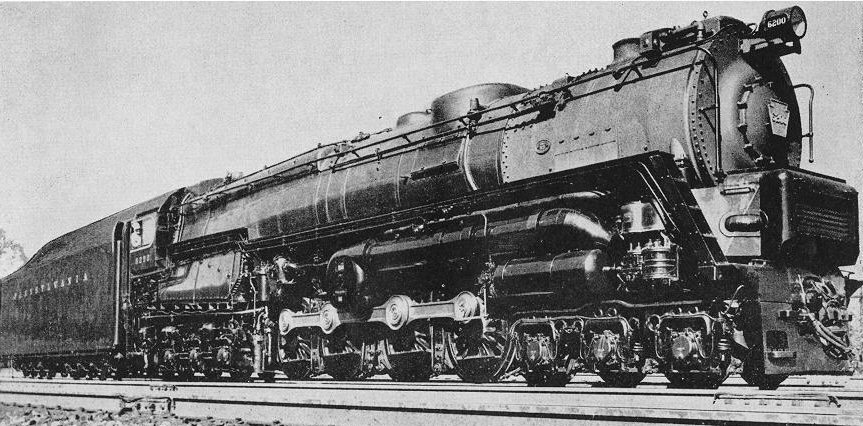
#6200 without shrouding at the front.
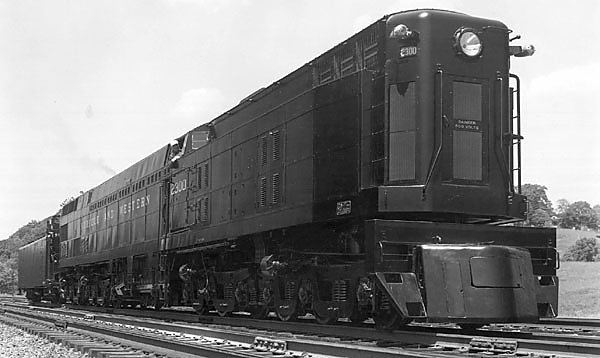
This is one of the locomotives we presented on the “largest” steam locos list. The “Jawn Henry” N&W #2300 was built in 1954 – caption: “Although superficially similar to the Chesapeake and Ohio steam-turbine loco , it was of quite different design, being shorter and lighter, with a Babcock & Wilcox water-tube flash boiler working at 900 lb/sqin. GE traction motors were fitted to the four 3-axle bogies; all axles were powered so the wheel config was C-C-C-C. The 2300 only survived for only three years. Once again there were major difficulties with reliability. Coal dust contaminated the electrical equipment. The feedwater heater and semi-automatic boiler controls gave trouble, and the turbine blades suffered when the loco backed heavily onto a train. None of these problems appear to be insoluble, but the locomotive was mainly used as a “pusher” and was scrapped in 1958.”
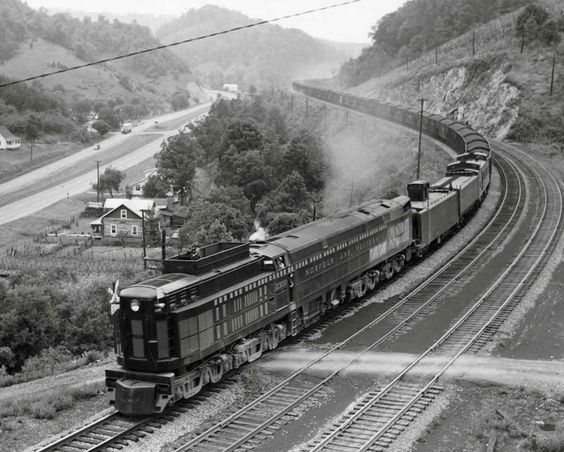
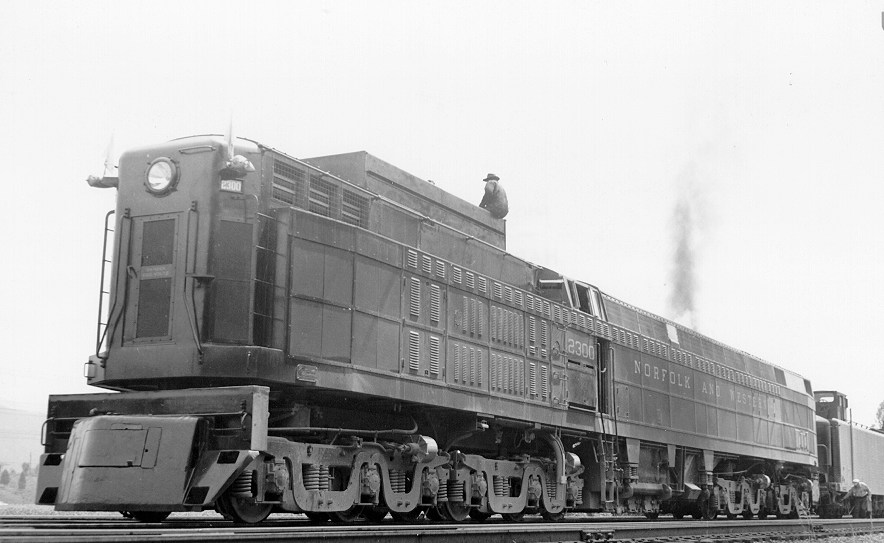

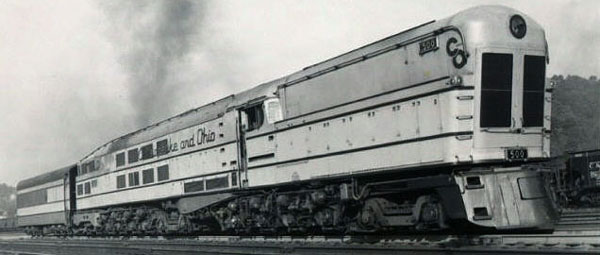
This is another we listed in the largest locos. C&O M-1 #500 was built by Baldwin and Westinghouse in 1947, while #s 501 & 502 were built in 1948. The M-1s were similar to a cab-forward (like the “Jawn Henry” above” – the boiler is behind the cab. The long nose in front of the cab contained the coal bin, while the tender behind only carried water. Caption reads: “This locomotive is another steam-turbine/electric; three were built. They had conventional coal-fired fire-tube boilers mounted backwards behind the cab and stretching back towards the tender. Steam was generated at the high pressure of 310 psi and fed to the turbine-generator. Power output was 6000hp, transmitted through eight traction motors. There were five bogies in a 2-C1-2-C1-B arrangement. Only the first three axles on the eight-wheel bogies were powered. The trailing bogie was powered, (hence that B) but the leading bogie and the one in the middle were not; the middle four-wheel bogie simply supported the large firebox. Coal was stored in a large hopper at the front of the loco, covered by a very ugly “streamlined” cowl. Water was carried in the trailing tender.”
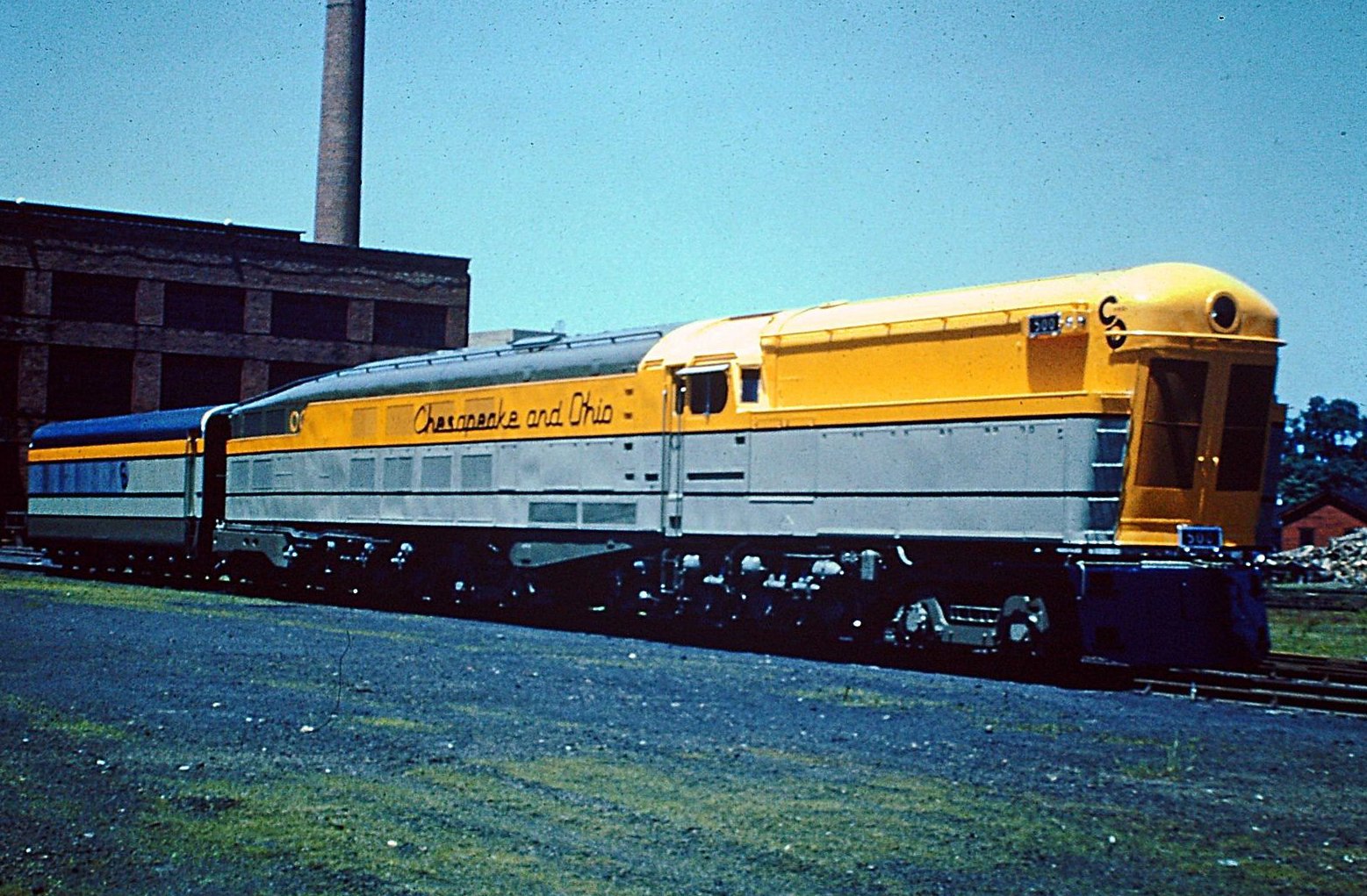
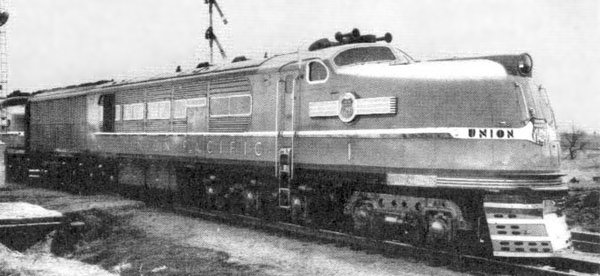
The UP #1 & #2 were 2-C+C-2 steam turbines, built by GE – delivered to UP in 1938. Caption reads: “In an attempt to compete with General Motors passenger diesels, General Electric built a pair of steam-turbine-electric locomotives in 1938 for use on the Union Pacific Railroad. They were built over three years at the General Electric Plant in Erie, PA at a cost of around $2,000,000 and were the first turbine-electric locomotive built is the USA.
They were built to look like the EMD diesels that were being introduced around the same time. The wheel arrangement of both locomotives was 2-C+C-2. They were rated at 2,500 horsepower each and able to attain speeds up to 125 MPH. After several trial trips made over the New York Central, they left the Erie works Saturday April 1st, 1939 for Omaha, NE for the Union Pacific where they were to be used to pull streamlined passenger trains throughout the west.

The UP ran them on a few test trips and sent them around the country on a publicity tour. They were only “operational” for 6 months before returning to GE in late 1939. Subsequently, they did some work for the GN and NYC in 1943 during the motive power shortage during the war but it was deemed that they would be more useful as raw material and were scrapped by GE in 1943. These were the only two condensing steam locomotives built and operated in North America and were engineering triumphs but again practical failures.”
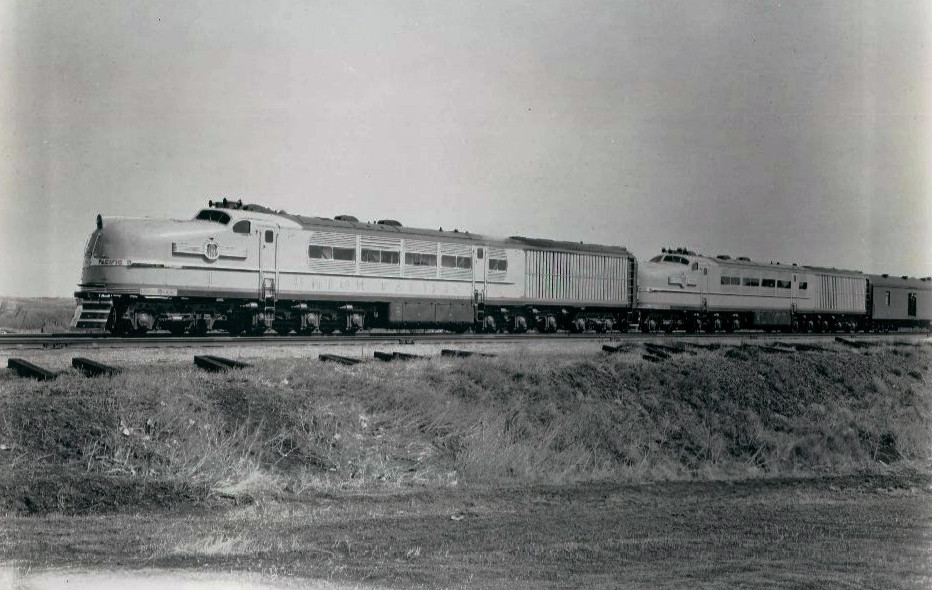
1 & #2 together:
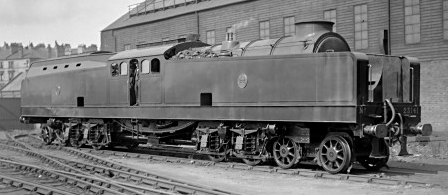
I generally stay away from British locos – mainly because of regional modeling interest (only). But the Reid-MacLeod steam turbine has a fascinating look.
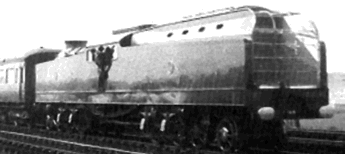
History around this loco is a bit hazy – it was built by the North British Locomotive Company and first began tests in 1926. But it appears in 1924 as a rebuild of an earlier steam turbine experiment.
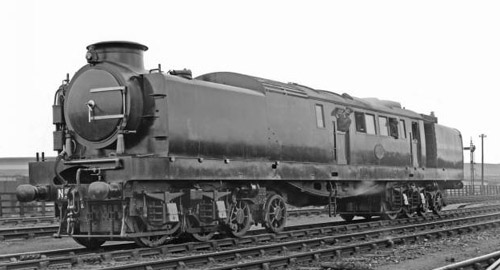
It was pretty much abandoned after the testing, but these early experiments by the North British Loco Co. lead the way for steam turbine development.
Enough for today – Thx,
Kevin
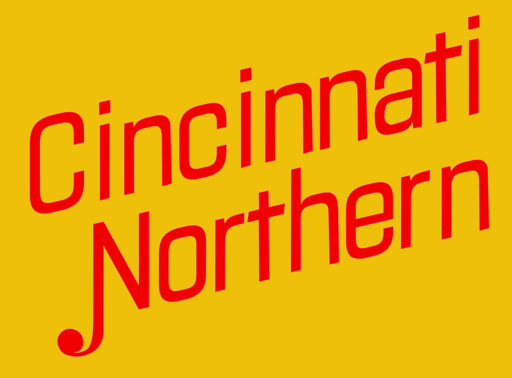
Oops again – The first pic PRR S-2 caption has an error in it. I listed the power as 7,200 hp @ 100 mph – that’s the power of the PRR S-1. The S-2 was still high on the list with 6,900 hp.
Thx,
Kevin